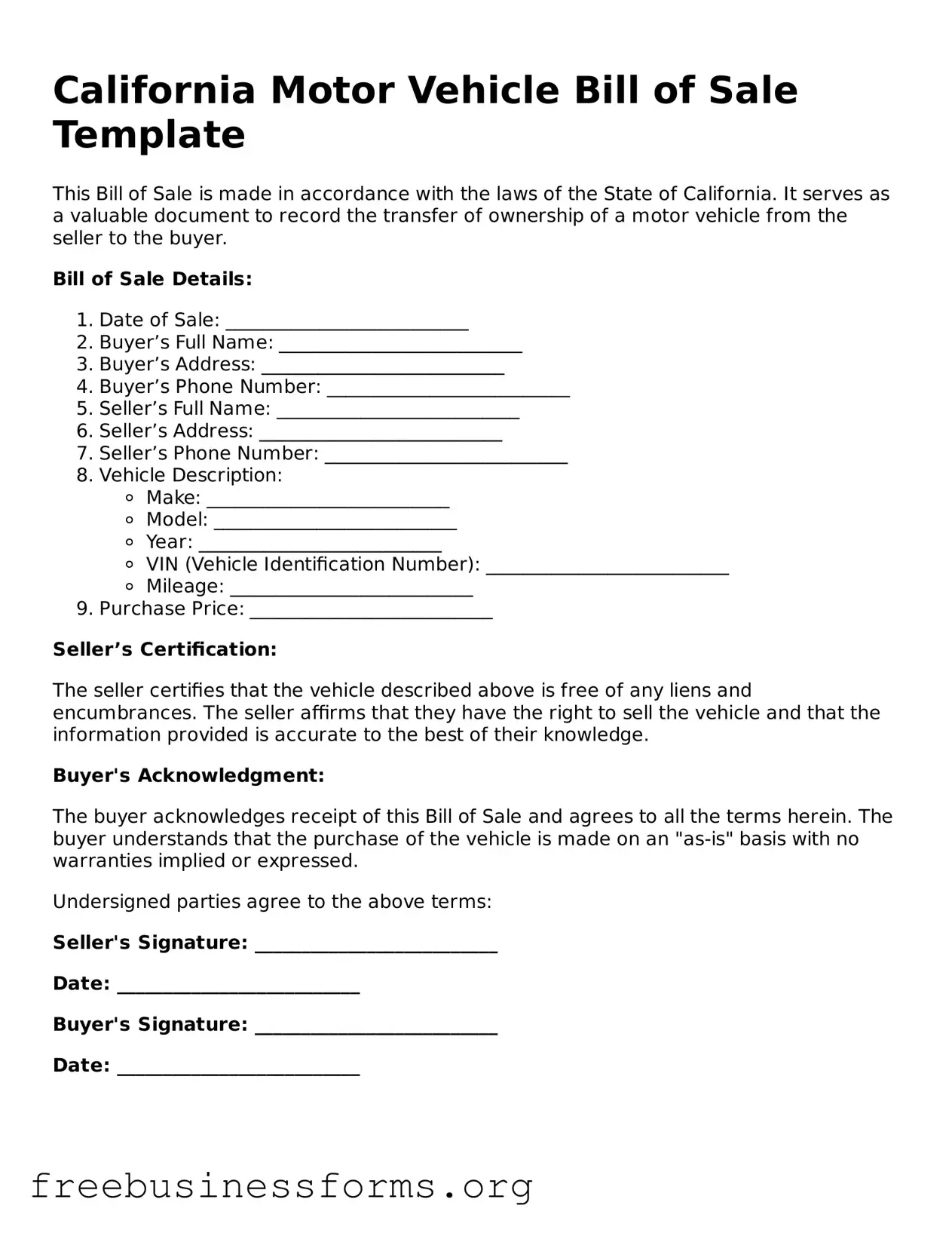California Motor Vehicle Bill of Sale Template
This Bill of Sale is made in accordance with the laws of the State of California. It serves as a valuable document to record the transfer of ownership of a motor vehicle from the seller to the buyer.
Bill of Sale Details:
- Date of Sale: __________________________
- Buyer’s Full Name: __________________________
- Buyer’s Address: __________________________
- Buyer’s Phone Number: __________________________
- Seller’s Full Name: __________________________
- Seller’s Address: __________________________
- Seller’s Phone Number: __________________________
- Vehicle Description:
- Make: __________________________
- Model: __________________________
- Year: __________________________
- VIN (Vehicle Identification Number): __________________________
- Mileage: __________________________
- Purchase Price: __________________________
Seller’s Certification:
The seller certifies that the vehicle described above is free of any liens and encumbrances. The seller affirms that they have the right to sell the vehicle and that the information provided is accurate to the best of their knowledge.
Buyer's Acknowledgment:
The buyer acknowledges receipt of this Bill of Sale and agrees to all the terms herein. The buyer understands that the purchase of the vehicle is made on an "as-is" basis with no warranties implied or expressed.
Undersigned parties agree to the above terms:
Seller's Signature: __________________________
Date: __________________________
Buyer's Signature: __________________________
Date: __________________________
